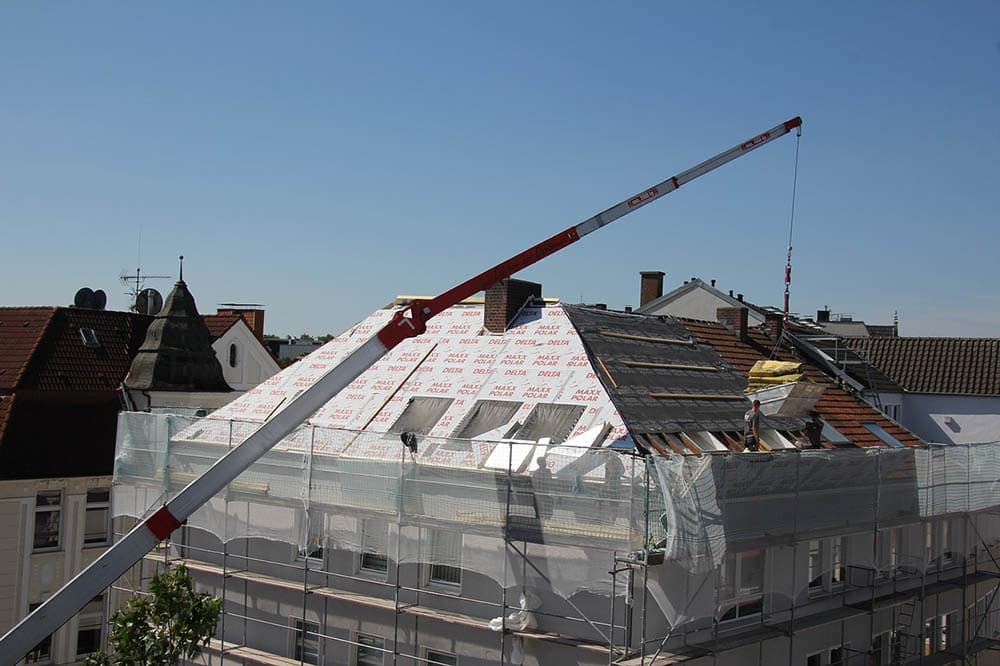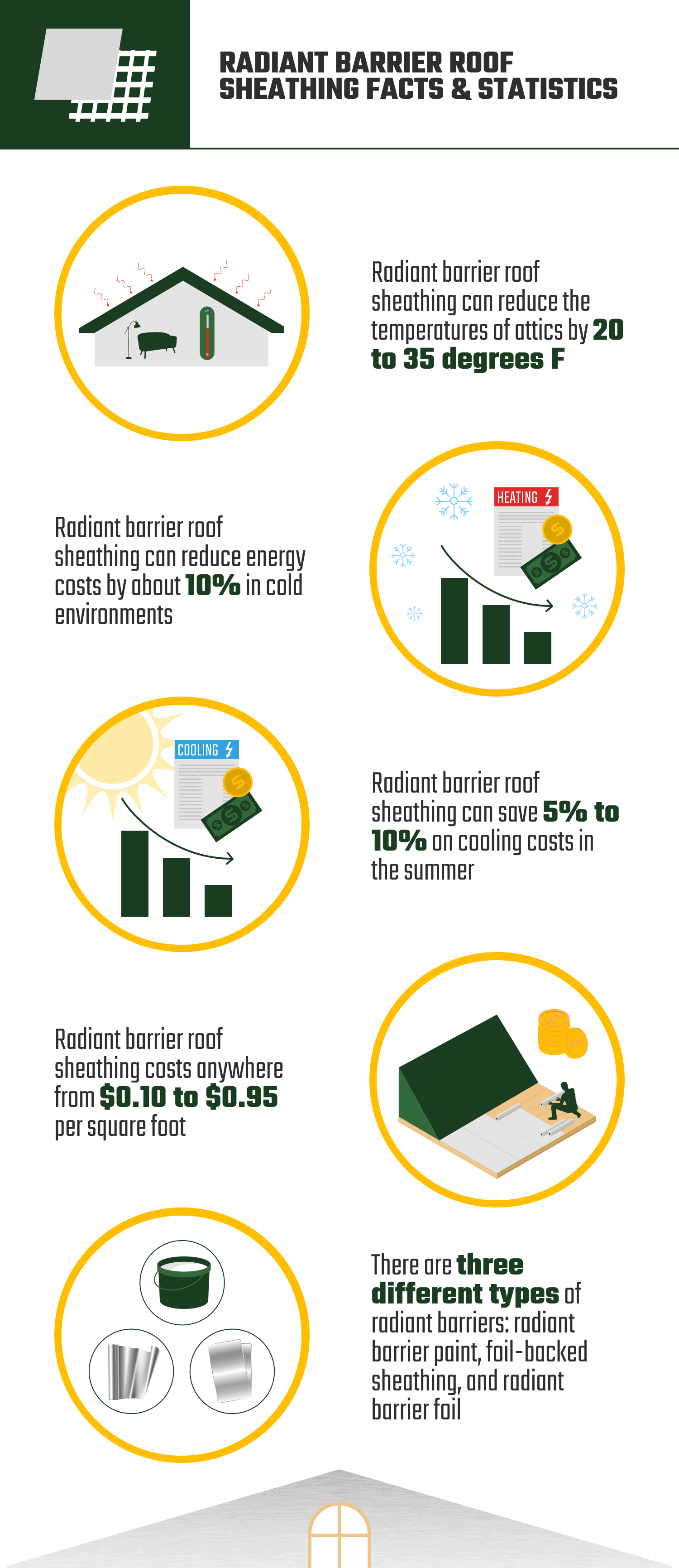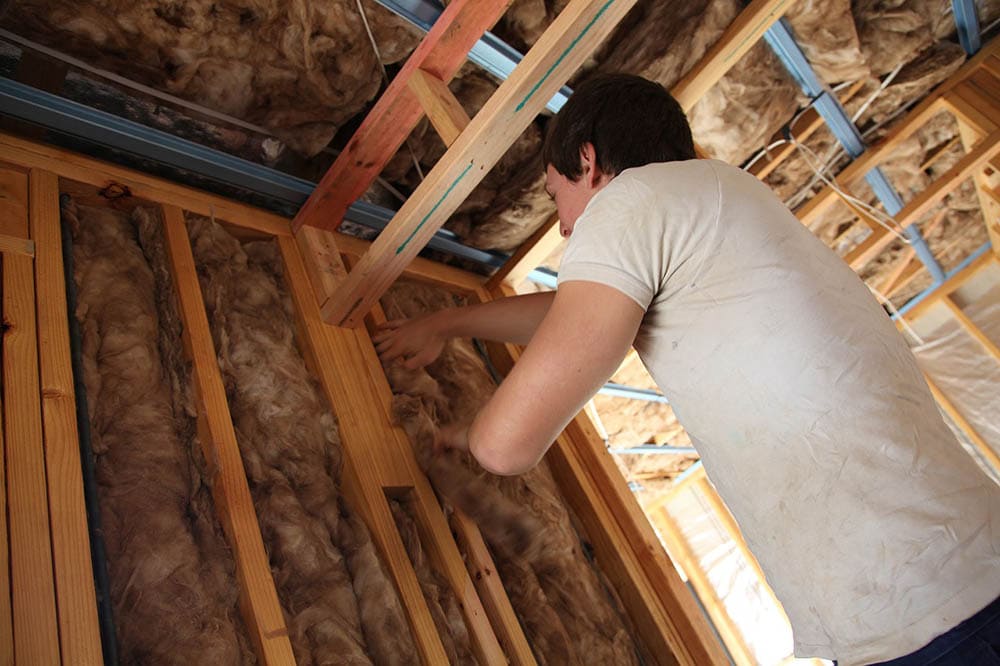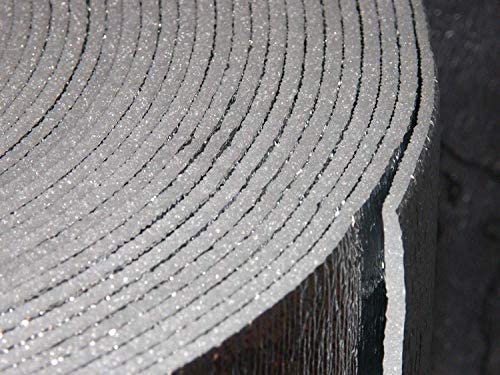11 Radiant Barrier Roof Sheathing Facts and Statistics (2025 Update)
-

- Last updated:

Note: This article’s statistics come from third-party sources and do not represent the opinions of this website.
One of the best ways to make your home more efficient is by installing radiant barrier roof sheathing. Radiant barrier roof sheathing is a type of reflective surface that you put in between the sun and your conditioned air space. The goal of a radiant barrier is to block radiant heat, which is a type of heat transfer. It keeps your attic cool and can even help warm up cold homes when used properly, but it is better for certain homes over others.
To learn more about radiant barrier roof sheathing, keep reading. This article tells you 10 facts you need to know about this energy-efficient tool.
Click below to jump ahead:
- Facts About How Radiant Barrier Roof Sheathing Works
- Effectiveness of Radiant Barrier Roof Sheathing
- Costs of Installing Radiant Barrier Roof Sheathing
Top 11 Radiant Barrier Roof Sheathing Facts
- There are three different types of radiant barriers.
- Radiant barrier roof sheathing blocks what traditional insulation measures can’t.
- Radiant barrier roof sheathing is best for homes with ductwork and HVAC systems in the attic.
- Radiant barrier roof sheathing cannot replace insulation.
- The stapled-foil or roof sheathing is the best type of radiant barrier.
- Radiant barrier roof sheathing can reduce the temperatures of attics by 20 to 35 degrees Fahrenheit.
- Radiant barrier roof sheathing can reduce energy costs by about 10% in cold environments.
- Radiant barrier roof sheathing costs anywhere from $0.10 to $0.95 per square foot.
- The cost of installing radiant barrier roof sheathing can cost $740 to $2,840 in total.
- Radiant barrier roof sheathing can save 5% to 10% on cooling costs in the summer.
- If you live in cold areas, thermal insulation is more cost-effective than a radiant barrier.

Facts About How Radiant Barrier Roof Sheathing Works
1. There are three different types of radiant barriers.
(Home Efficiency Guide)
In total, there are three different types of radiant barriers: radiant barrier paint, foil-backed sheathing, and radiant barrier foil. Most of these types of radiant barriers are exactly what they sound like.
Radiant barrier paint is painted over affected areas to help prevent radiant heat. Unfortunately, this is a very inefficient option.
For any new roof that is being designed with radiant barriers, foil-backed sheathing is selected. The foil-backed sheathing is built into the attic itself so that radiant heat is minimized. This is considered the most effective type of radiant barrier.
In comparison, radiant barrier foil is a way to add a radiant barrier to a home after it has already been constructed. It is a foil that you staple into place, even if you don’t have the money to completely redo the roof with a barrier.

2. Radiant barrier roof sheathing blocks what traditional insulation measures can’t.
(Green Builder Media)
It’s interesting to compare radiant barrier roof sheathing to traditional insulation. Traditional insulation is designed to decrease conduction and convection, which are the two most common forms of heat transfer.
Although it is great that traditional insulation blocks convection and conduction heat transfer, they are incapable of blocking radiant heat. What this means is that radiant barrier roof sheathing can block types of transfer heat that traditional insulation can’t.
Effectiveness of Radiant Barrier Roof Sheathing
3. Radiant barrier roof sheathing is best for homes with ductwork and HVAC systems in the attic.
(Americover)
Although radiant barrier roof sheathing can be a good choice for all homes, it is especially great for homes that have ductwork and HVAC systems in the attic. This is because radiant barrier sheathing is specifically helpful for attics. When these items are in the attic, the sheathing helps to increase their efficiency.
4. Radiant barrier roof sheathing cannot replace insulation.
(Energy Home Pros)
Even though radiant barrier roof sheathing is a great choice for maximizing the efficiency of your HVAC system, you can’t use it to replace insulation. That’s because radiant barriers do not protect against the same type of transfer as insulation.
If you just get radiant barrier roof sheathing installed, you won’t be able to protect against conduction and convection heat transfer. You will end up wasting a whole lot of money on your HVAC system since your home won’t be properly protected.
In other words, radiant barrier roof sheathing is designed to enhance the insulation you already have. Use traditional insulation with a radiant barrier to maximize energy efficiency.
5. The stapled-foil or roof sheathing is the best type of radiant barrier.
(Americover)
If you want the most effective radiant barrier, you should either opt for stapled-foil or outright roof sheathing. However, which one you select depends on the status of your attic.
If you’ve already built your attic roof and cannot afford to completely have the sheathing redone, opt for stapled foil. Stapled foil is highly effective for roofs that are already built. In comparison, roof sheathing is best for homes being made or sheeting being replaced.
You should not select paint on radiant barriers. Paint on radiant barriers is practically useless.
6. Radiant barrier roof sheathing can reduce the temperatures of attics by 20 to 35 degrees Fahrenheit.
(Green Builder Media)
Although radiant barriers are designed to work in theory, do they work in practice? Surprisingly, these relatively new tools are highly effective.
Radiant barrier roof sheathing has been found to reduce the temperature inside attics by 20 degrees and 35 degrees Fahrenheit. This is a huge difference in temperature for attics that are often boiling.
7. Radiant barrier roof sheathing can reduce energy costs by about 10% in cold environments.
(Innovative Insulation)
Since radiant heat is more of an issue for environments where the sun is beating down on rooftops, you might not think it is very effective for cold environments. Surprisingly, that is not the case.
Even in cold environments, installing radiant barrier roof sheathing has been found to reduce energy costs by about 10%. This is a huge reduction of costs.
More so, many experts recommend using radiant barriers on floors in cold environments. It will help keep the lower areas feeling warm, especially the floor. For example, certain communities in Chicago have started using radiant barriers on the floors.
Costs of Installing Radiant Barrier Roof Sheathing
8. Radiant barrier roof sheathing costs anywhere from $0.10 to $0.95 per square foot.
(Home Cost Helper)
The cost of radiant barrier sheathing has a pretty wide range. Some rolls cost as little as $0.10, but some cost almost a dollar. The number of layers are used in the radiant barrier and the exact material, such as foil or sheathing, impact the exact price.
9. The cost of installing radiant barrier roof sheathing can cost $740 to $2,840 in total.
(HomeAdvisor)
The cost to install some form of radiant barrier insulation can cost as little as $740 or as most as $2840. On average, the price is $1700. How much you will pay will depend on how much area you need to cover and the material you use, as well as the professional you hire.
10. Radiant barrier roof sheathing can save 5% to 10% on cooling costs in the summer.
(Energy.gov)
During the summer, installing a radiant barrier of some kind, specifically roof sheathing or stapled foil, can save 5% to 10% on your cooling costs. These costs are based on warm and sunny climates. You might not save as much if your area isn’t particularly sunny.
11. If you live in cold areas, thermal insulation is more cost-effective than a radiant barrier.
(Energy.gov)
As we mentioned above, using a radiant barrier in cold conditions is wise if used correctly. That being said, traditional thermal insulation is more cost-effective than a radiant barrier in cold conditions. That’s because thermal insulation is more affordable and easier to install, and it will focus on keeping the heat trapped inside your home.
 Frequently Asked Questions About Radiant Barrier Roof Sheathing
Frequently Asked Questions About Radiant Barrier Roof Sheathing
Is radiant barrier roof sheathing worth it?
Radiant barrier roof sheathing is worth it in some conditions but not all. This sheathing may certainly be worth it if you have an attic with HVAC or ductwork systems. More so, it is worth it if you live in a particularly hot or sunny environment.
If your house is already made but you think a radiant barrier will be for you, you might want to opt for stapled foil instead. It has the same benefits as radiant barrier roof sheathing. The main difference is that it is added after the constructed roof.
(Green Home Guide)
How long does radiant barrier roof sheathing last?
Radiant barrier roof sheathing is designed to last a long time. Nearly all users report that their radiant barrier lasts for over 10 years without any significant issues.
(American Insulation LLC)
Can radiant barrier roof sheathing cause mold?
Radiant barrier roof sheeting can cause mold. It’s essential to have the radiant barrier roof sheathing installed professionally and cared for to prevent mold buildup and water damage.
(Attic Construction)
Can I install radiant barrier roof sheathing myself?
No. Contact a professional to install radiant barrier roof sheathing for you to ensure it is installed correctly.
(Attic Construction)
Conclusion
Based on these facts above, radiant barrier roof sheathing is a great choice to select if you want to increase the energy efficiency in your home. Especially if you live in a sunny environment and have HVAC systems in your attic, it can help save you some money and keep your home feeling cool in the summer.
Featured Image Credit: InstagramFOTOGRAFIN, Pixabay
Contents



 Frequently Asked Questions About Radiant Barrier Roof Sheathing
Frequently Asked Questions About Radiant Barrier Roof Sheathing